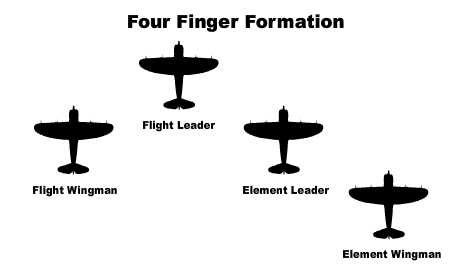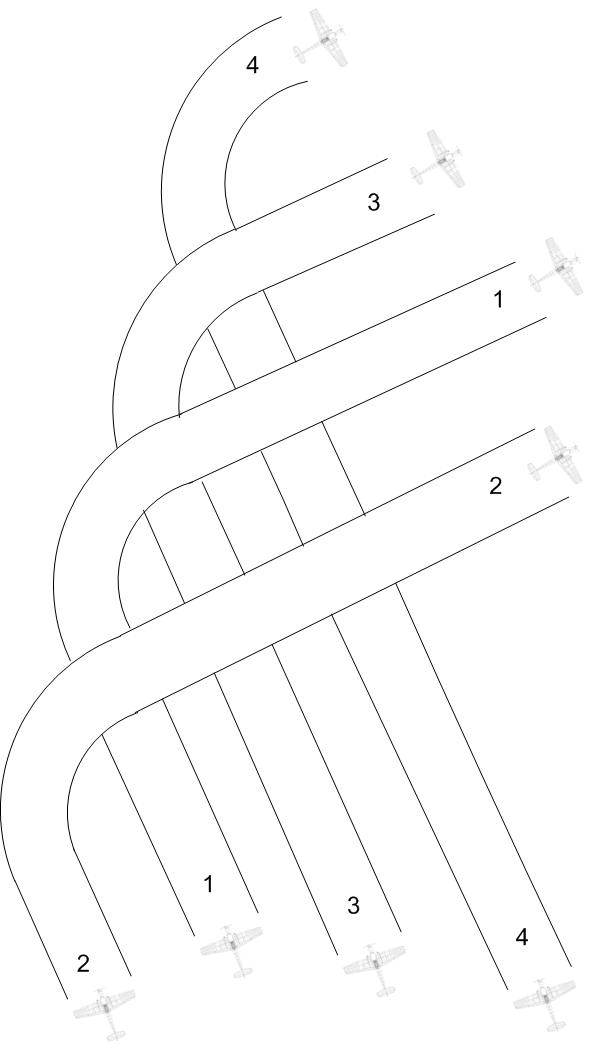His innovative strategies had such a profound effect that eventually all of the participating air forces in World War II adopted his pair system, finger-four formation, and crossover turn
The Luftwaffe, which had only been formally constituted in 1935 after being established in secrecy, was a new air force when the Spanish Civil War began in 1936. However, it was quickly growing and in a position to support its Nationalist allies under Franco. The first significant airlift in history was launched by the Luftwaffe’s expeditionary force, the Legion Condor, to transport Franco’s troops to Spain.
It deployed its best pilots and newest aircraft, the Bf 109, He 111, and Ju 87 Stuka, to join the battle to build the Luftwaffe’s doctrine, tactics, and combat experience over the course of the following three years. For the Blitzkrieg that would soon be unleashed throughout Europe, the Spanish Civil War proved to be an excellent training field.
The Luftwaffe also learned many tactical lessons in Spain, according to Dr. James S. Corum in his book Legion Condor 1936–1939 the Luftwaffe develops Blitzkrieg in the Spanish Civil War, but the most significant one was a revolutionary shift in fighter combat that would ultimately change how all air forces fought. Not a high-ranking officer, but a fighter pilot who arrived as a first lieutenant and replacement fighter squadron commander was one of the Spanish Civil War’s most important figures.
But in a very short time, this young lieutenant would play a crucial part in changing fighter tactics. In Westphalia, Werner Mölders was born in 1913. He was reared by his mother’s family in central Germany after his reserve officer father was killed in the conflicts of 1915. In 1931, after graduating from one of Germany’s top high schools, he applied to the army as an officer aspirant using his Abitur, which is a university entrance certification. He underwent a three-year, extremely extensive, and demanding officer education program after being appointed to the 2nd Prussian Infantry Regiment.
Mölders was appointed a lieutenant and given the new Luftwaffe in March 1934. Mölders enrolled in flight school and earned the top grade in his class. Then, in June 1935, he completed the special six-month fighter-pilot course, again graduating at the top. He received a promotion to first lieutenant in 1936. Major Theo Osterkamp, the group commander, who would go on to become one of the key figures in the Luftwaffe fighter force, oversaw Mölders’ command of a training squadron. Mölders assumed command of Jagdgeschwader 334 in March 1937 and quickly established himself as an outstanding leader and educator.

Mölders agreed to travel to Spain and arrived there in March 1938. He was given the responsibility of taking over Adolf Galland’s fighter unit, which was still using He 51s but was switching to Bf 109s. following a brief period of transition, assumed command of the squadron in May 1938. Mölders soon became embroiled in very tough battles over the Ebro and in the area of Aragon. On July 15, 1938, he scored his first victory over an I-15. Mölders amassed 14 confirmed aerial victories between July and November 3, 1938, making him the leading German ace of the Spanish Civil War. His wins included one SB-2 bomber, 12 I-16s, and two I-15s.
Mölders started construction on a ground-breaking new tactical system for the fighters as he led his squadron into the battles of Aragon and the Ebro. Until that point, the system employed by all the major air forces had hardly changed from World War I, when squadrons of 9–12 aircraft would fly a fairly close formation, typically based on the “V” or Flight of three aircraft. Fighter aircraft in World War I were not equipped with radios, thus they had to communicate with one another via hand signals. In order to read these signals, pilots needed to be close enough to their flight and squadron leaders.
A Great War tactical strategy made little sense now that airplanes were more than twice as quick as World War I biplanes and furnished with radios. Mölders created a system centered on pairs, where a pair of wingmen, known as a Rotte, would watch out for each other, usually with one facing forward and the other slightly above and behind. To create a loose formation of four aircraft known as a Schwarm, the Rotte could be increased by adding another Rotte. This four-aircraft Schwarm replaced the three-aircraft flight and was also called the ‘finger-four formation’ because it looked like the fingers of a hand, with two fingers, the second slightly ahead, and then a pair of fingers, the second aircraft again slightly leading.

Now, small groups and pairs would be the basis of fighter squadron tactics. Since radio connections allowed for good communication, aircraft could now fly 300–500m apart rather than 30m apart as in the previous tactics. The fighters could patrol and observe a larger region of the sky by dispersing and flying in pairs, and the risk of midair collisions was essentially reduced.
Any Schwarm engaging in combat may easily be joined by more Schwarms given the speed of the Bf 109. Mölders gave his fighter pilots training in the novel techniques. Additionally, he discovered a novel combat flight turn technique. A tight direction change for a flight or squadron used to be an extremely risky maneuver due to the extremely close spacing between aircraft. Now that there was more space between the aircraft, Mölders created the crossover turn, which required the aircraft to simply pivot 90 degrees and transfer positions.
When Mölders finished his tour, he was taken back to the Luftwaffe staff and given a specific assignment in the Fighter Inspectorate: to develop and train the Fighter Command in this new tactical system. The new fighter tactics proved to be so effective against the Republican pilots. From March to December 1938, Mölders only spent eight months in Spain before being promoted to captain and handing over command of his squadron to Hubertus von Bonin. However, Mölder’s reputation as a great fighter tactician and leader was cemented during those eight months in Spain. Mölders was swiftly given the position of group and wing commander.
In the 1940 French campaign, he served as a major and group commander. By 1941, he had achieved the rank of colonel, or Oberst, and was in charge of a fighter wing in Russia. He was appointed Inspector of the Luftwaffe Fighters that year, although he only held the position for a short time until his death in an accident in November 1941. He achieved more than 100 confirmed victories in the air before any other fighter pilot in history. His innovative strategies had such a profound effect that eventually all of the participating air forces in World War II adopted his pair system, finger-four formation, and crossover turn.

Legion Condor 1936-39 the Luftwaffe develops Blitzkrieg in the Spanish Civil War is published by Osprey Publishing and is available to order here.
Photo by MisterBee1966, Gold Lead, Bundesarchiv, Bild 146-1971-116-29 / CC-BY-SA 3.0, Bundesarchiv, Bild 183-B12018 / CC-BY-SA 3.0 via Wikipedia


1 comment
Hola
Muy buena nota…!!!!!!!
Gracias Hernán